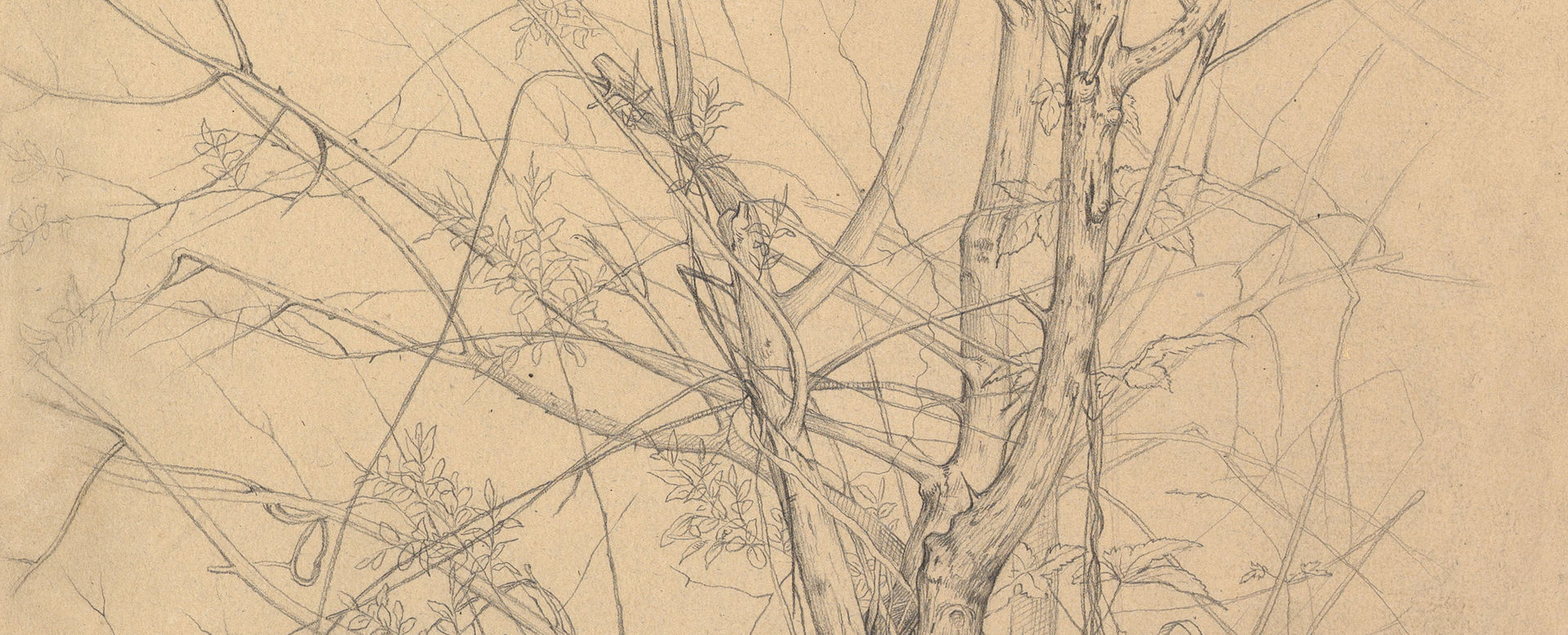"Jocund Day Stands Tip Toe on the Misty Mountain Tops" (Shakespeare, Romeo and Juliet, Act 3, Scene 5)
George Richmond British
Subject William Shakespeare British
Not on view
This dramatic pose embodies lines that Romeo speaks to Juliet as he prepares to leave after their wedding night:
Look, love, what envious streaks
Do lace the severing clouds in yonder east.
Night’s candles are burnt out, and jocund day Stands tiptoe on the misty mountain tops. I must be gone and live, or stay and die.
Echoing the verse, Richmond’s figure of Day balances on the toes of one foot, her forward movement arrested as she turns to check the waxing light. Firm graphite lines define the form while lighter rapid strokes describe flying hair and drapery. When he made this drawing, the artist was suffering romantic difficulties and would have sympathized with Shakespeare’s unhappy lovers. The parents of his fiancée, Julia Tatham, had forbidden him to see her and were encouraging another suitor, a situation that propelled the couple to elope to Gretna Green in January 1831.
This image cannot be enlarged, viewed at full screen, or downloaded.


